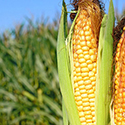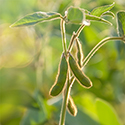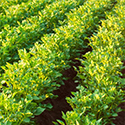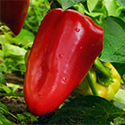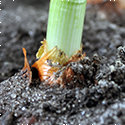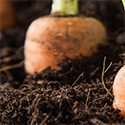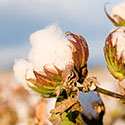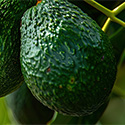Improving wheat yield
- Third most planted row crop behind corn and soybeans
- 777M tonnes is the projected harvest for 2019/2020
- Russia is the world’s largest exporter of wheat, selling 34.5M tonnes in 2019, followed by the US (26.6M tonnes) and EU 23.7M tonnes
- There are thousands of varietals, which can be planted in fall (Winter Wheat) or early spring (Spring Wheat)
- Wheat is used for wheat flour to bake bread, livestock and pet food, dextrose and alcohol
Growing wheat
- Winter wheat is planted in late fall. It grows dormant during winter and begins to grow again in spring
- Spring wheat is planted in spring as soon as possible, depending on when the soil becomes warm, generally above 36°(F)
- Winter wheat is more common in warmer central states such as Texas and Nebraska
- Genetically modified wheat is not grown commercially in the US
- Certified wheat seed is cleaned and sprayed with herbicides and pesticides
- A good planting of spring wheat can include 1.2 million plants per acre
- Only the seed head is actually used as a cereal grain
- Depth of planting for seeds varies by region, less than 3″ is a good guideline
- Traditionally planted in tilled, fallow ground, today wheat is often rotated with soybean and corn on no-till fields
- Wheat must be dried before it can be harvested. It turns from green to brown during this process. Where there is not enough time to dry the wheat, a swather can be used to cut the wheat and form windrows which are left to dry.
- A combine can be used for reaping, binding and threshing. Threshing loosens the grain in the seed head. Chaff and stalks are dropped back on the field, grain is off-loaded to a special trailer.
- Harvested grain can be dried in storage using warm circulated air
The market for wheat
According to the United Nations Food and Agriculture Organization (FAO) the world wheat trade for 2020/2021 is expected to top a record 184.5 M tonnes. Egypt was the leading importer in 2019 with over 12.6M tonnes purchased, followed by Indonesia and Turkey. Since the late 1980’s, Russia has gone from being one of the largest importers to the largest exporter, shipping out over half of its 2019 harvest, between 37 and 39M tonnes. United States is now the second biggest exporter at 27M tonnes. Russia made this progress largely through aggressive mechanism of farming operations and investment in supply chain infrastructure, including storage, port facilities and ship capacity.
In addition to wheat flour, wheat is used in starch, malt, dextrose, gluten, and alcohol. Wheat is also used as feed for livestock and poultry.
Agricultural challenges when growing wheat
Genetically modified wheat has been developed, but is not widely planted in the US, as there is resistance to it in the EU. To control disease and pests, certified wheat seed are cleaned and then sprayed in accordance with farmer’s needs for disease and pest control. An issue that has been building for many years is caused by the commodity-driven supply chain in the US. Farmers are paid on yield in bushels per acre, and not rewarded for quality, just quantity. Growers are disconnected from the market and the needs of millers and bakers. According to Farm Strategy, the quantity of protein as gluten has been decreasing for 20 years or more. This coupled with the way wheat has been processed since the late 1800’s by steel rollers instead of stone mills has led to the production of wheat that causes digestive problems in some people, and has forced bakers to add imported gluten to processed white flour in order to make quality bread.
Research has shown that irrigation of wheat in dry years can substantially increase yields, however, extended periods of soil saturation can encourage fungal pathogens which may in turn lead to a harvest being refused by storage facilities. Controlling soil moisture is critical to managing the wheat crop.
Contact AquaSpy
AquaSpy for wheat
With a Crophesy annual subscription, you receive a free simple, three-sensor, wireless, soil moisture probe. Place these rugged, water-tight probes throughout your wheat field and connect them to the app via your smartphone.
Then you can instantly monitor soil and crop health for all of your wheat. And if you want to test the soil in other areas, you can quickly and easily move the moisture probe, which is battery-powered and provides season-long insight.
While you can look at the visual analysis of leaves, spending hours in your field, Crophesy enables you to open your app from anywhere and show you what kind of nourishment is available in your soil at your wheat crop root depth. With this data, you can determine when the active root zone needs vital nutrients.
In addition to nutrient data, the Crophesy app can show you:
- Moisture consumption at the root level
- Salinity level in the active root zone
- Root depth
- Soil temperature near the sensors
- Irrigation depth
And it tells you all this without you having to step foot in your wheat field.


